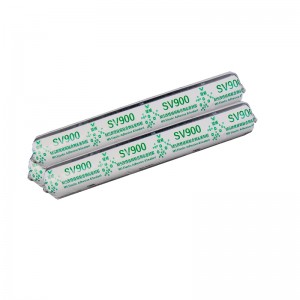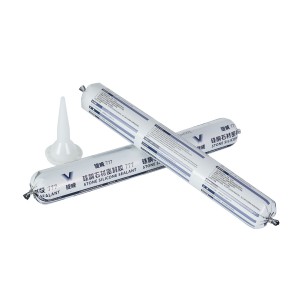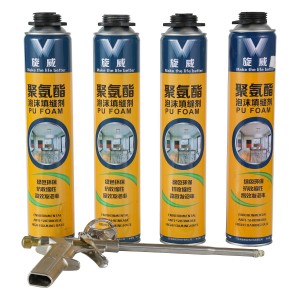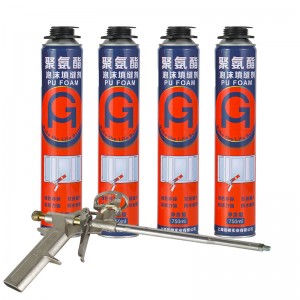SV-900 MS Polymer High-elasticity Sealant Adhesive
Product Description
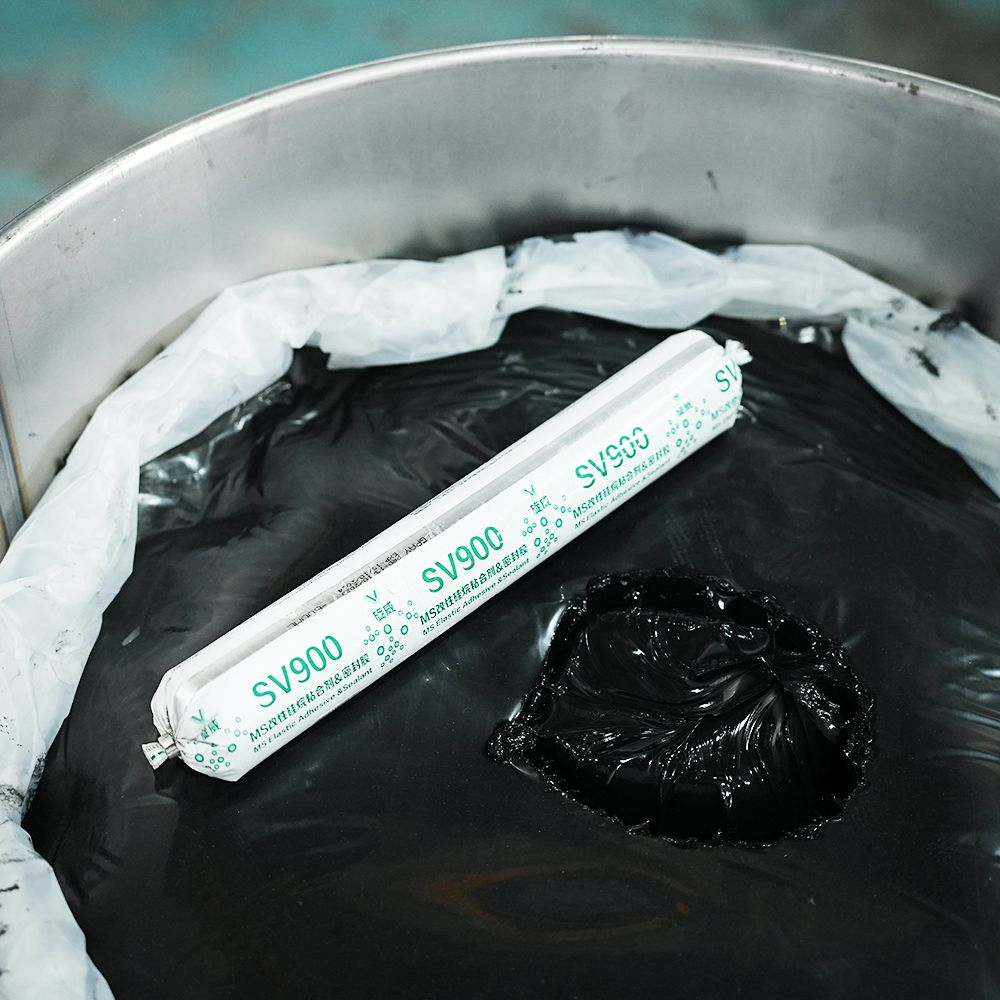
FEATURES
| Item | Value |
|---|---|
| Product Type | Modified silane sealant & adhesive |
| Composition | One-component |
| Curing Mechanism | Moisture-curing |
| Application | Assembly sealing and bonding of enclosures/boxes |
| Appearance | White, Gray, Black |
| Consistency | Paste-like, Thixotropic |
| Odor | Very low odor |
COLOURS
White,gray, black
BASIC USES
SV900 features excellent flexibility and elasticity, making it particularly suitable for elastic sealing of high-movement joints, including:
1.Door and window joints
2.Construction joints
3.Industrial movement joints
TYPICAL PROPERTIES
| Parameter Category | Parameter Name | Value / Description |
|---|---|---|
| Basic Properties | Density (g/cm³) | Approx. 1.46 (White, Gray, Black) |
| Sag Resistance | Non-sag | |
| Surface Drying Time (minutes)* | Approx. 10-40 | |
| Curing Rate (mm/24 hours) | Approx. 3 | |
| Mechanical Properties | Shore Hardness (GB/T 531-2008) | Approx. 23 |
| Tensile Strength (GB/T 528-2009) (MPa) | Approx. 1.5 | |
| Elongation at Break (GB/T 528-2009, speed 500 mm/min) (%) | Approx. 500 | |
| Modulus at 100% Elongation (GB/T 528-2009) (MPa) | Approx. 0.4 | |
| Movement Capability | Movement Class | 25LM Grade |
| Curing/Shrinkage | Volume Shrinkage (GB/T 13477.19-2017) (%) | <2 |
| Surface Compatibility | Paint Compatibility | Generally paintable |
| Weather Resistance | UV Resistance | No significant surface changes |
| Test Duration (weeks) | 6 | |
| QUV Resistance | No significant surface changes | |
| Test Duration (weeks) | 6 | |
| Experimental Durability** | (Not provided) | |
| Temperature Range | Service Temperature (°C) | -40 to +90 |
| Short-Term Temperature Resistance (12h) (°C) | 100 | |
| Application Temperature (°C) | 5 to 40 |
STORAGE AND SHELF LIFE
Frost sensitivity: No
Recommended storage temperature: 5 to 27°C
Shelf life (unopened original packaging), months 12
SAFETY INFORMATION
Precautions:
- Surface Preparation:
- Substrate surfaces must be clean, dry, and free of oil and grease.
- Depending on the surface, abrasion (roughening) or the use of a primer/promoter may be required to ensure optimal adhesion.
- Mold Release Agents:
- External mold release agents are frequently used in plastic manufacturing. These agents must be thoroughly removed before bonding or sealing.
- Testing Requirement:
- Due to varying paint compositions (especially powder coatings) and the wide range of substrates, testing is mandatory prior to use.
- Particularly plastics and coated surfaces must be tested.
- Stress Cracking (PMMA & Polycarbonate):
- Bonding or sealing PMMA (acrylic) and polycarbonate may lead to stress corrosion cracking under tension. Testing is essential before use in these applications.
- Non-Adherent Substrates:
- No adhesion to polyethylene (PE), polypropylene (PP), or polytetrafluoroethylene (PTFE).
- Untested Substrates:
- Testing should be performed for substrates not explicitly mentioned above.
Application (Usage):
- Dispensing:
- Use a manual caulking gun or pneumatic applicator gun for dispensing from cartridges (hard sausage packs) or foil sausages (soft packs).
- When using compressed air, a pressure of 0.2 to 0.6 MPa is required.
- Material Temperature:
- Low sealant temperature increases viscosity, reducing extrusion rate.
- Avoid this by warming the sealant to room temperature before dispensing.
- Curing Acceleration:
- Increasing the ambient temperature and humidity will increase the curing rate.
Cleaning:
- Uncured Sealant:
- Can be wiped off using solvents such as alcohol.
- Cured Sealant:
- Requires physical removal using tools like a scraper or knife.
DISCLAIMER
The information presented herein is offered in good faith and is believed to be accurate. However, because conditions and methods of using our products are beyond our control, this information should not be used in substitution for customer’s tests to ensure that our products are safe, effective, and fully satisfactory for specific applications.
Manufacturer
Shanghai Siway Building Material Co.Ltd
No.1 Puhui Road ,Songjiang Dist,Shanghai,CHINA
Tel: +86 21 37682288
Fax:+86 21 37682288





